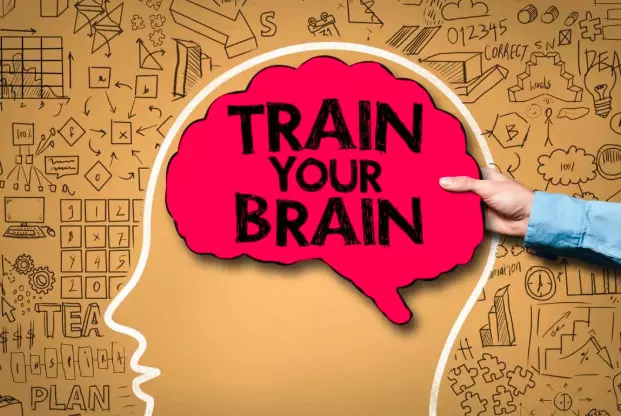Brain Training: Clear Guide with Evidence, Steps, and Tips
Brain Training

Brain training means doing tasks that boost memory, attention, thinking speed, and reasoning. It includes puzzles, apps, games, and new skills. It aims to make the mind sharper and more flexible.
Researchers trace benefits to daily training sessions. Analysts report stronger memory and focus in older people after structured programs. Scholars note that gains often stick to the trained tasks. Few studies show carryover to unrelated skills in real life. Research highlights that long-term benefits require regular effort.
Imagine you recall names easily. Imagine solving problems faster under pressure. You feel confident in exams or work. You tap your true thinking power by training your brain now.
What brain training means
Brain training uses tasks that challenge memory, attention, speed, and reasoning.
People use apps, games, puzzles, learning, and lifestyle changes.
The goal stays the same. The goal: strengthen thinking skills.
What science shows — summary
Some studies find clear gains on trained tasks. Other studies show small gains that do not spread to daily life. Researchers agree on one point. Training helps the skill you practice. Transfer to different skills varies by method and group.
Older adults can gain real benefits. A large trial found better thinking, memory, and attention after weeks of training. The results came from a controlled study with thousands of participants.
Long-term effects vary. Some training shows gains that last for years for specific skills. Other gains fade if people stop practicing. The ACTIVE trial found lasting benefits in reasoning and speed, not in memory.
Why results differ
Study design affects results. Many trials use tasks that resemble the training. That design inflates gains on tests. Researchers ask a clear question. Will training improve only the same task? Or will it boost broad thinking? Meta-analyses reach mixed conclusions for broad effects.
What works best
Targeted training yields the best gains. Train working memory to improve working memory. Train reasoning to improve reasoning. Strategy training helps transfer more than task repetition. Training with real problems yields more real-life benefits.
Practical program you can follow
- First, choose one goal. Pick memory, focus, or speed.
- Second, select tools. Use puzzles, apps, books, or guided programs.
- Third, set time. Do short sessions daily. Aim for 15–30 minutes.
- Fourth, track progress. Use simple tests that differ from training tasks.
- Fifth, mix modes. Add exercise, social activity, and learning. These steps increase the chance of meaningful gains.
Sample weekly plan
- Day 1: Working memory drills. Two 15-minute sessions.
- Day 2: Reasoning puzzles. One 30-minute session.
- Day 3: Physical activity plus a simple memory game.
- Day 4: Attention tasks. Two 15-minute sessions.
- Day 5: New skill practice. Language or music for 30 minutes.
- Day 6: Strategy training. Real-world tasks like planning a route.
- Day 7: Rest or light social game.
Lifestyle moves that boost brain health
Exercise improves blood flow and boosts cognition. Nutrition supports neuron repair. Sleep clears waste from the brain. Social contact supports mental resilience. The World Health Organization includes these areas in its brain health framework. Use them with training for lasting benefit.
Who should use brain training?
Older adults who want to slow cognitive decline benefit most. People with specific deficits can gain targeted improvements. Healthy adults gain skill-specific improvements. Expect modest broad gains unless training includes strategies and real tasks.
Common myths and facts
- Myth: Brain games make you smarter in all areas.
- Fact: Training improves trained skills. Broad gains happen only with certain methods.
- Myth: Quick apps solve long-term decline.
- Fact: Short use gives short gains. Combine training with exercise and sleep for lasting change.
- Myth: One app fits all.
- Fact: Choose training that matches your weak areas.
How to pick an app or program
Check for peer-reviewed studies. Look for trials with active control groups. Prefer programs that report transfer to real tasks. Avoid bold claims without evidence. Trusted sources include academic journals and national health institutes.
Measures to track progress
Use tests that differ from training tasks. Measure daily tasks like following instructions or remembering appointments. Record scores weekly. Note changes in mood and focus. Ask a friend or family member for feedback.
Risks and limits
No serious harms exist from most training. False promises cost time and money. Rely on evidence. Consult a clinician for severe memory problems. Health checks ensure medical causes do not hide behind memory loss.
Quick checklist before you start
- Define one clear goal.
- Pick evidence-based tools.
- Schedule short daily sessions.
- Mix mental drills with exercise and sleep.
- Track non-training tasks for real progress.
Transition to action
First, set one goal. Next, pick two simple tasks. Then, start daily. Finally, review after six weeks.
Unique conclusion
Brain training works like skill practice. Practice improves the skill. Broad change requires strategy, variety, and real tasks. Combine training with healthy habits to change life, not just test scores. Choose clear goals. Keep sessions short. Track real tasks. This route leads to steady gains that matter.

